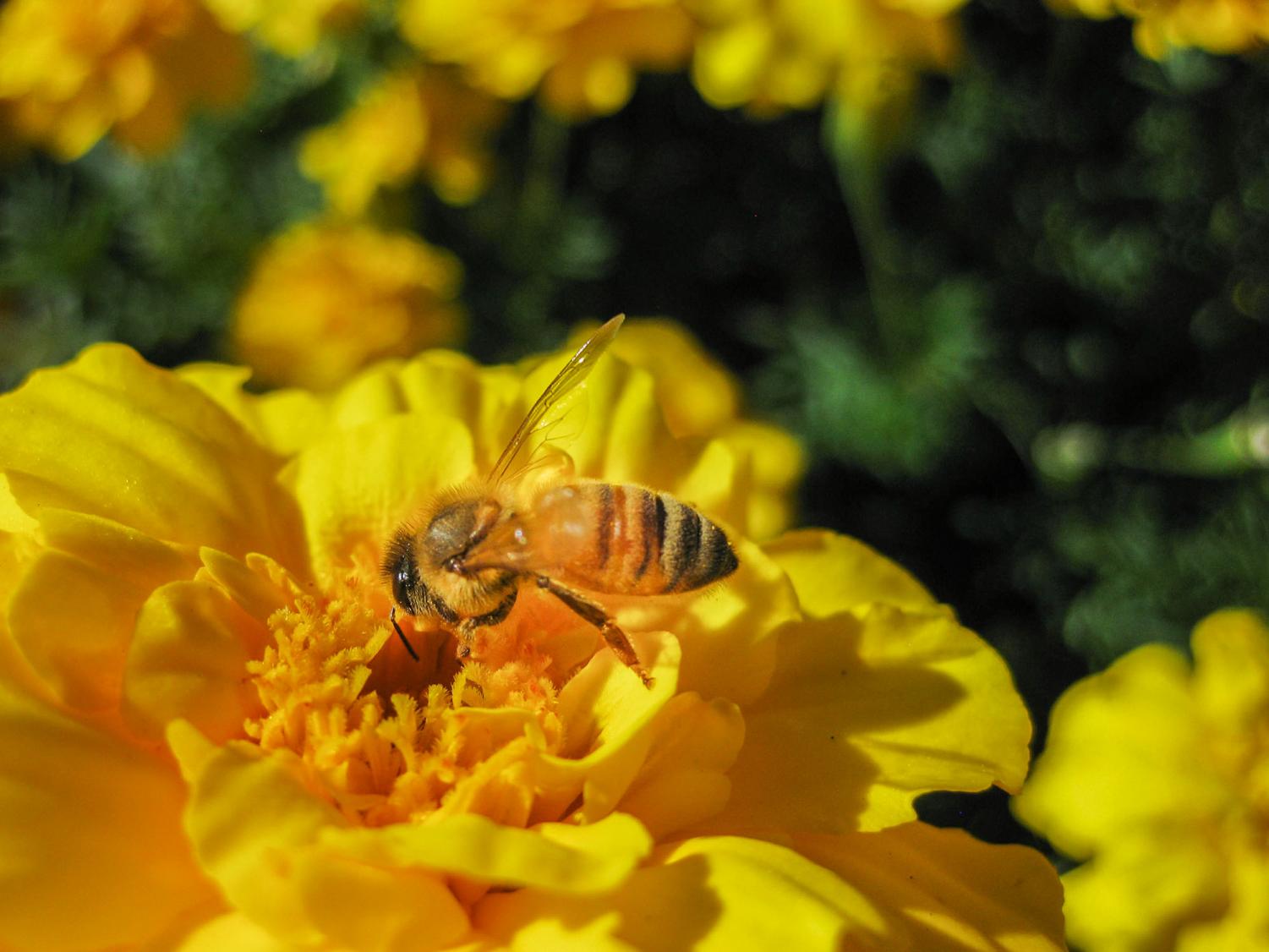
Angelica is a senior multimedia journalism major from Oahu, Hawaii. She started working for The Daily Evergreen as a news reporter in fall 2017. She became...

Eastern Washington’s wheat fields, lack of flowers may contribute to insect’s decline
January 21, 2020
Diversifying farms with different types of plant and flower species can combat the decline in pollinator insects such as bees.
“Many bees rely on flowers as their primary resource,” said Elias Bloom, WSU alum and Michigan State University postdoctoral researcher. “If you take those flowers away, then there’s nothing for the bees to eat, and that’s when you start having local losses of bee species.”
Bloom said he examined about 36 urban gardens and small-scale farms in Western Washington from 2014 to 2018. Not only did he observe different types of bees and the plant species they interacted with, but he also determined whether the plants are important for promoting more pollinators.
Bloom and his team then analyzed the observations and how plant biodiversity impacts pollinators, said Tobin Northfield, WSU department of entomology assistant professor.
“Believe it or not, there is a debate in the scientific community whether or not [it is a] particular plant species that are important to promoting […] bee pollinator visitation, or is it all of the plant species working together,” Bloom said.
By using a mathematical equation they found that plant species that work together promote more pollinators on farms, he said.
Bloom said some plants that are usually found in small farms include tomatoes, cucumbers and zucchini. Farmers might also grow dahlias and sunflowers not only to sell but to attract pollinators as well.
Northfield said an additional benefit to plant diversity is attracting insects like wasps or flies, which attack pests.
“Pollinators are one benefit, but you may also have, say flowering plants that then produce nectar that parasitoids feed on,” he said. “They don’t bother humans.”
The landscape around the farm can be a limiting factor for pollinators, Northfield said.
“Imagine that you had a really highly diverse farm that’s relatively small, but in the midst of this [is a] massive concrete parking lot that goes as far as I can see,” he said. “There would be no place for these bees to nest or have alternative resources.”
Bloom said people generally see big fields of wheat or canola in Eastern Washington. Fields like these are referred to as monocultures, he said, which is when a cropping system only grows one plant species.
“Part of solving pollinator decline is figuring out what are the practices and the types of farming styles that promote pollinators,” Bloom said.
He said one of the ways farmers can help pollinators is by finding empty spaces around the farm.
“Restoring even just a margin of your farm, like the grassy area between the road and where the field starts, with pollinator planting can help increase or help support lots of different species,” Bloom said.

Angelica is a senior multimedia journalism major from Oahu, Hawaii. She started working for The Daily Evergreen as a news reporter in fall 2017. She became...